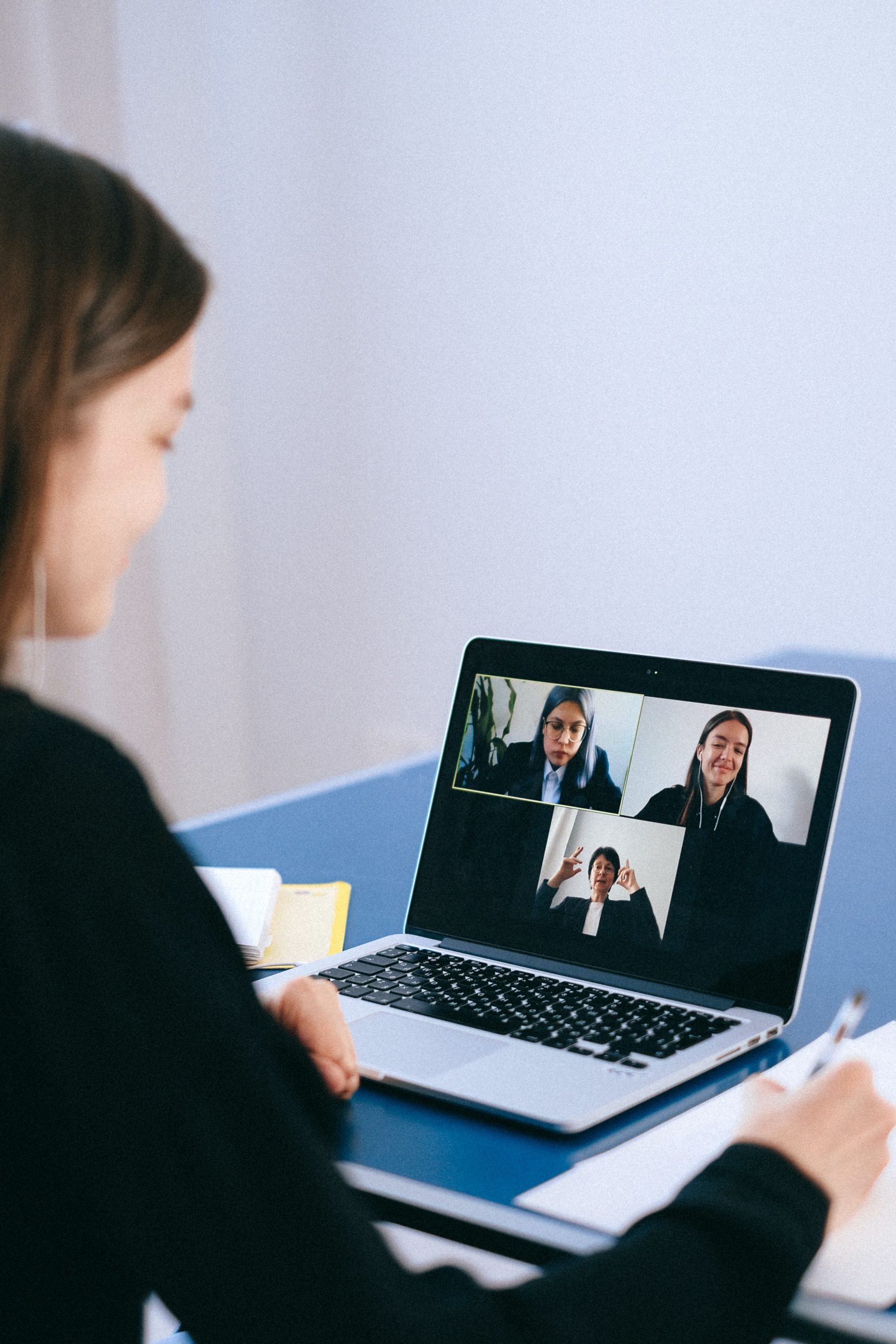When historians tell the story of the COVID-19 pandemic, Zoom will undoubtedly be part of the conversation.
It’s how educators and students experience learning, how business leaders communicate with their organizations, it’s even how extended families connect in the socially distanced world.
But, as the team at Fox Management Consulting (FMC) recently learned, Zoom is also a way for live research to be quickly gathered and disseminated.
At the start of the pandemic, FMC recognized an opportunity to connect with an audience of business leaders by telling the stories of success in times of unanticipated crisis. The group launched a webinar series, Post Pandemic: Stories of Organizational Resilience and Innovation, showcasing 14 one-on-one conversations between an FMC faculty member and a business or nonprofit leader.
“We went into this because we wanted to elevate the FMC profile as industry thought leaders,” says Assistant Professor Marilyn Anthony, who served as one of four rotating FMC hosts. “We couldn’t engage people in person, so this was a way for us to engage people.”
Along the way, Zoom began to show its potential as a research tool.
“For me, what we tried to do here was be pretty forward-thinking,” Anthony says. “This is not high-level research, but it’s primary research. We were talking to industry leaders who had experience and clear points of view that were valuable.
“If we are living in this new world, we need to use things to their best advantage. Meetings are being held on Zoom, so why not do research on Zoom too?”
“We were conducting research via Zoom in the most direct delivery system possible. We were not interviewing people then writing an article about it and putting it in a journal. We were interviewing people with a live audience so they are part of the research, if you will. They are benefitting from the research immediately.”
The webinar’s format of a 15-minute conversation between an FMC host and guest was followed by another 15-minute question-and-answer session where the audience could engage with the host and guest via Zoom’s chat function. Later in the series, an audience poll was used to add depth and context to the conversation.
“I think there is a lot more opportunity for gathering research through the polling function,” Anthony says. “In the future, we should consider following up with the audience with surveys and such. I feel like we are pioneers in an academic setting.”
Anthony believes FMC’s endeavor could spark confidence with faculty and researchers to now think about Zoom as another research tool.
“It has a number of benefits: it’s live but can be captured through a recording; you are pushing out information and pulling in information because you are engaging your audience through polling, surveys and/or chat, and you don’t need some big capital investment or sophisticated equipment. It’s immediate, really efficient and certainly cost effective.”
Anthony cautions that formats like FMC’s webinar series should not replace extensive written research traditionally presented at professional conferences.
“That’s not the audience and that’s not the intent,” she says. “But, with Zoom, the research goes right out to people in the community, in business, in nonprofits and organizations. You need to understand what this opportunity is and isn’t, and play to those strengths.”
The webinars became more developed as the series went on.
“We didn’t master it,” Anthony says, adding that the experience showed great potential for the future of information gathering. “If we are living in this new world, we need to use things to their best advantage. Meetings are being held on Zoom, so why not do research on Zoom too?”
Click here to view the webinar series.

